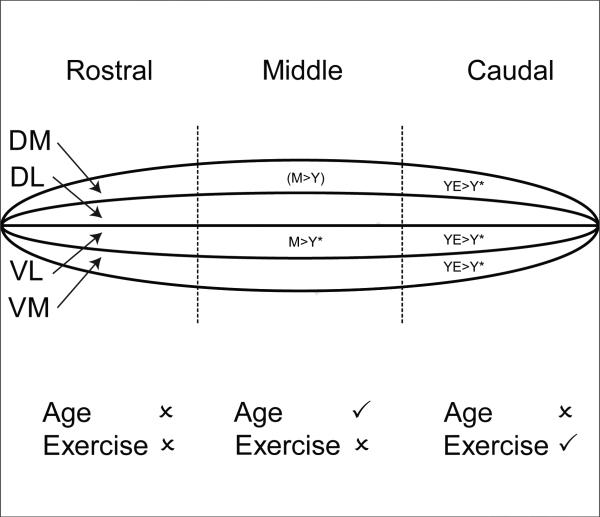Figure 6.
Summary diagram of region-specific exercise-induced and age-related changes in 5HT immunoreactivity in the hypoglossal nucleus. Top: The hypoglossal nucleus is represented as an elongated cylinder divided into three regions, rostral, middle and caudal. Within each region are four sample quadrants, dorsolateral (DL), dorsomedial (DM), ventrolateral (VL) and ventromedial (VM). Rat groups comprise young (Y), young-exercised (YE), middle-aged (M), middle-aged exercised (ME), old (O), old exercised (OE). Asterisks denote significance (p < 0.05). Brackets denote a strong trend. Bottom: Check marks denote a statistically significant effect of age or exercise in a region of the hypoglossal nucleus. X denotes no statistically significant effect.

